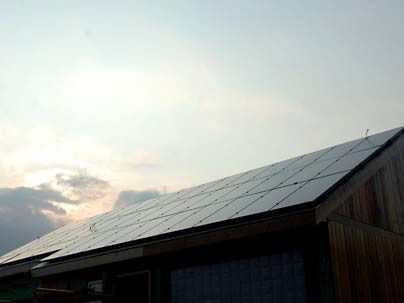The Energy Debates: Solar Energy at Home

Editor's Note: "The Energy Debates" is a LiveScience series about the pros, cons, policy debates, myths and facts related to various alternative energy ideas. We invite you to join the debate by commenting directly on each article. The Facts Imagine never paying another electric bill. Solar energy could make this a reality. Solar electric systems employ photovoltaic cells to convert sunlight into electricity, while solar water heaters use solar collector panels to warm up water. When the sun is out, if households are generating more power than they need, they can put that energy into the electric grid, and even receive credit toward future bills from the local electric company. At night or in cloudy weather, homes can draw energy off the conventional grid. The average solar electric system might supply 2 or 3 kilowatts of power, "which can be enough to supply most or all of the electricity needs of an energy efficient house," said John Rogers, a senior energy analyst at the Union of Concerned Scientists, a science advocacy group. A typical solar water heating system can supply 50 to 80 percent a residence's hot water needs, according to the Union of Concerned Scientists, and virtually all of a home's needs in warm and sunny climates such as Hawaii's. The amount of energy required to meet our hot water needs can be significant — the U.S. Department of Energy notes that heating water accounts for up one-quarter of the average household's energy use and nearly 4 percent of total U.S. energy consumption. A home could have both kinds of systems, providing there is enough rooftop space. Pros Solar energy is clean and renewable. "By going with solar at home, you are also locking in how much you pay for your electricity or water heating for years or even decades to come, and are therefore not subject to escalations of the cost of fuel," Rogers explained. Cons The upfront investment for these systems can be substantial — typically $25,000 to $30,000 for a solar electric system and $10,000 for a solar water heating system, "but rebates and tax credits can help with that, and companies or banks may have financing options to help spread the cost out," Rogers explained. "You are essentially avoiding electricity or fuel costs for a number of years with these systems, but that upfront investment is something to consider." What do you think?
- The Energy Debates: Small Wind Power
- Top 10 Emerging Environmental Technologies
- Whatever Happened to Solar Power?
Sign up for the Live Science daily newsletter now
Get the world’s most fascinating discoveries delivered straight to your inbox.

Most Popular




